When I was first invited on this trip, I didn’t exactly know what the River Parishes were. The description said the area between New Orleans and Baton Rouge, but I wasn’t sure what that entailed. Long ago, I rode through this region of Louisiana, and I recall the swampy landscape with its watery passageways, the overgrown cypress and oak trees dripping with Spanish moss, and the oppressive humidity.
On this adventure, the land seemingly hadn’t changed one bit, but the difference was that I could stop and explore this wide-ranging region. The River Parishes encompass St. John, St. Charles and St. James Parishes. While not part of the group, we also visited Assumption and Jefferson Parishes. Their tourism representatives were present for the beginning of most of our activities. Still, we were essentially left on our own, save for our driver Darius, a lively local who took us everywhere.
I’ve gone on about a half dozen of these media trips now, and every time the tourism bureaus pack the itinerary with plenty of things to do. However, this one was almost nonstop, and while it was busy, I enjoyed nearly everything about it. Some of the activities involved food so that I will save that for next week’s post.

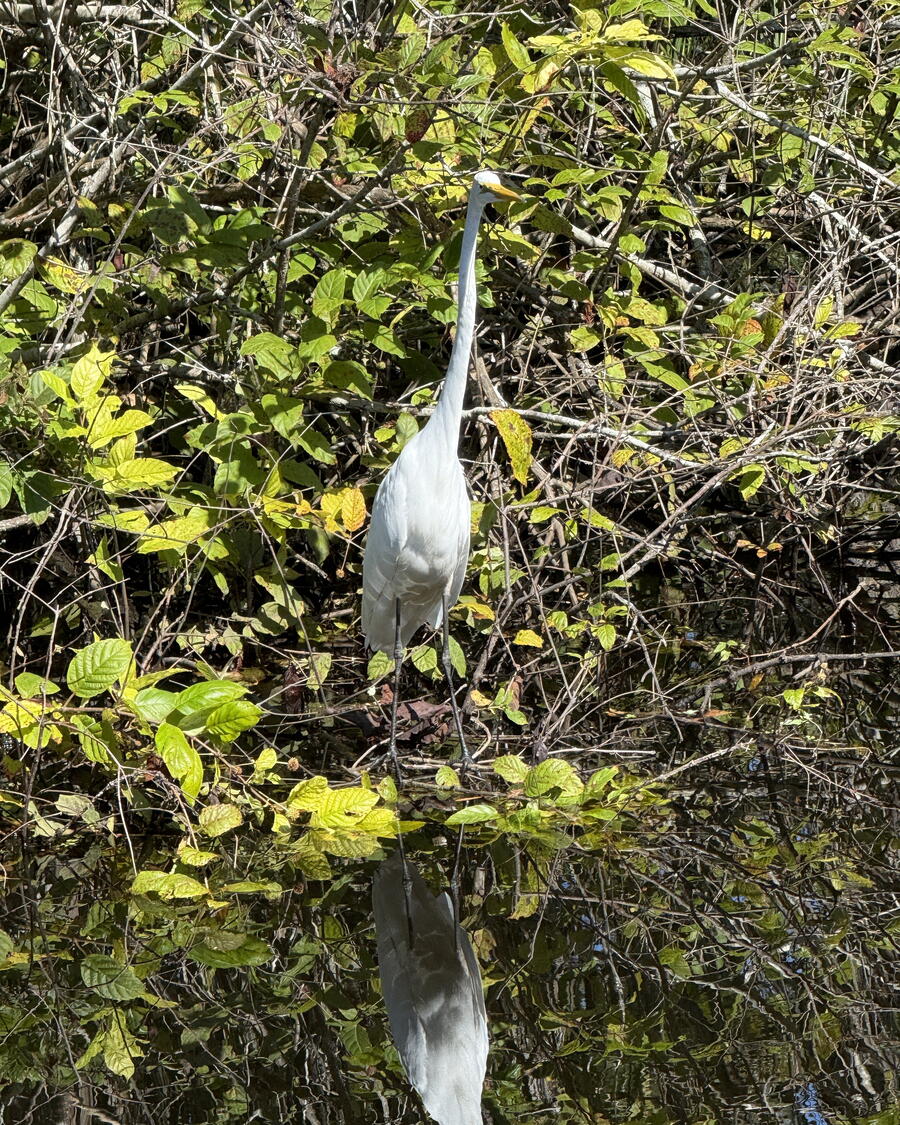
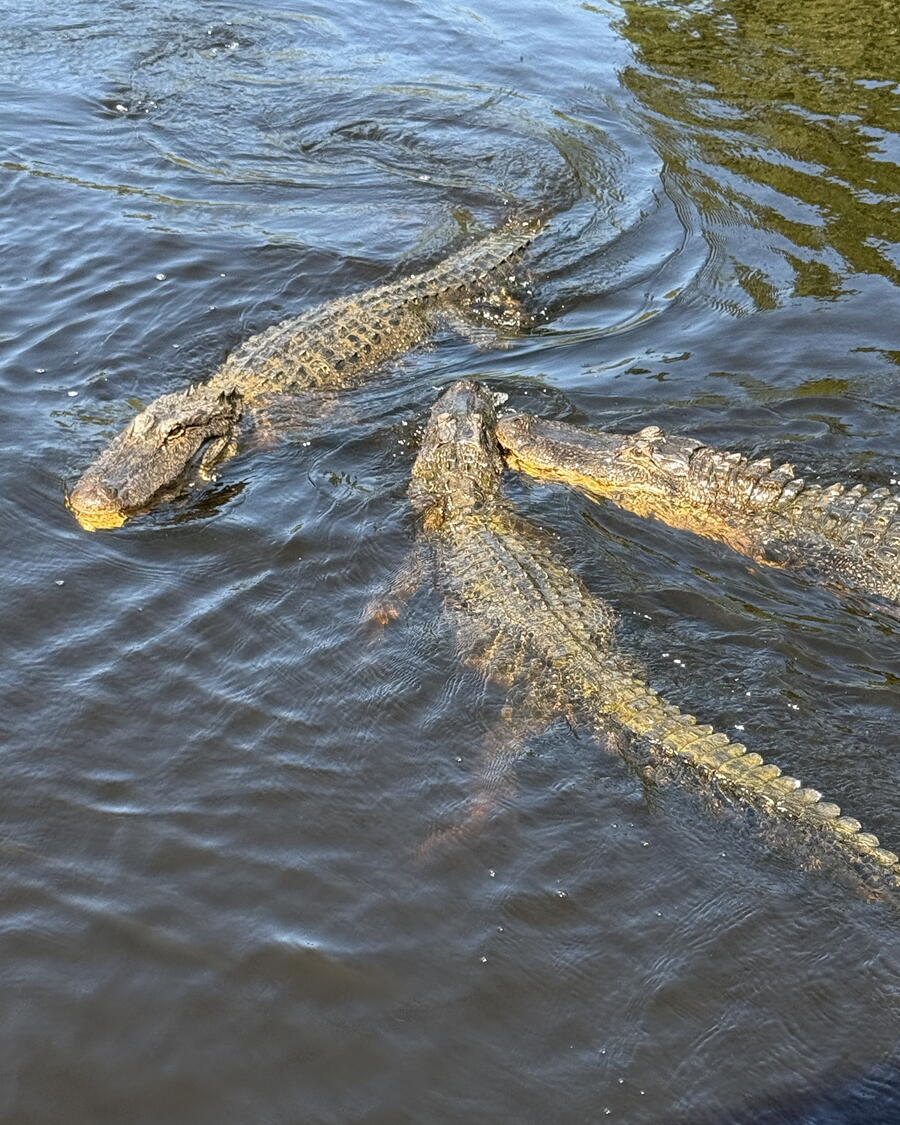

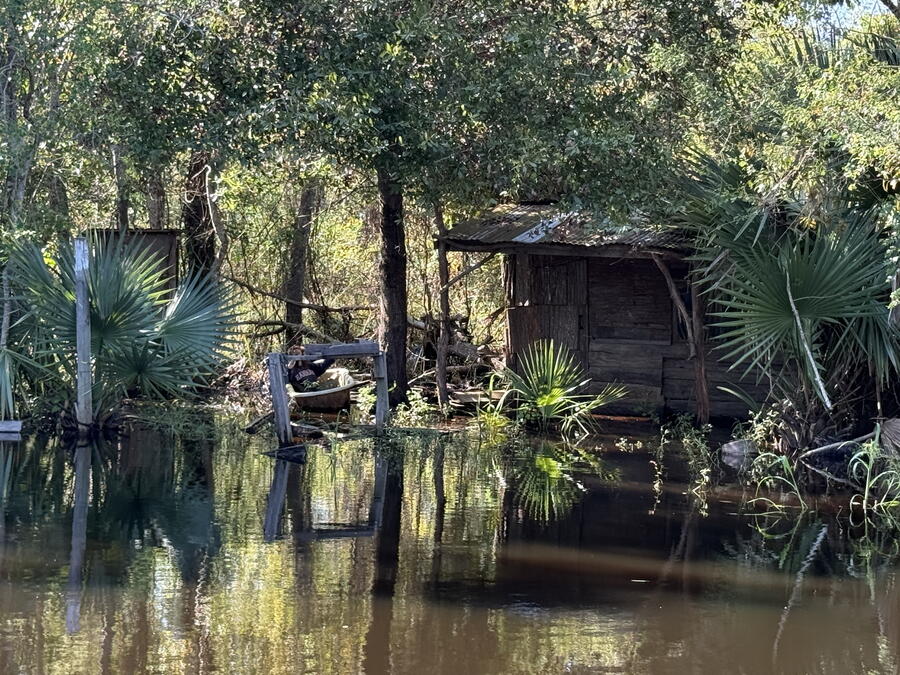
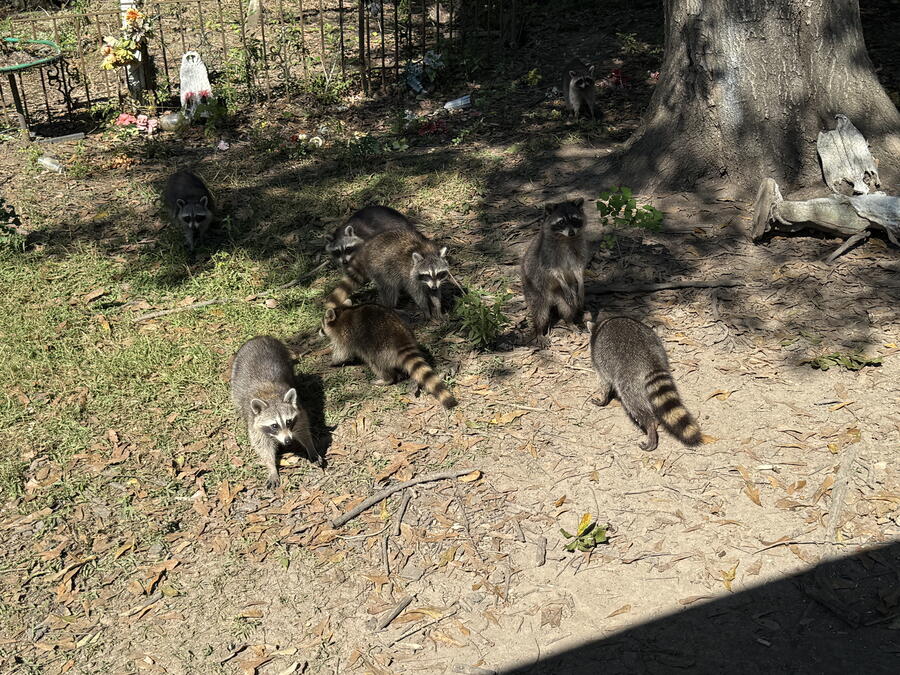
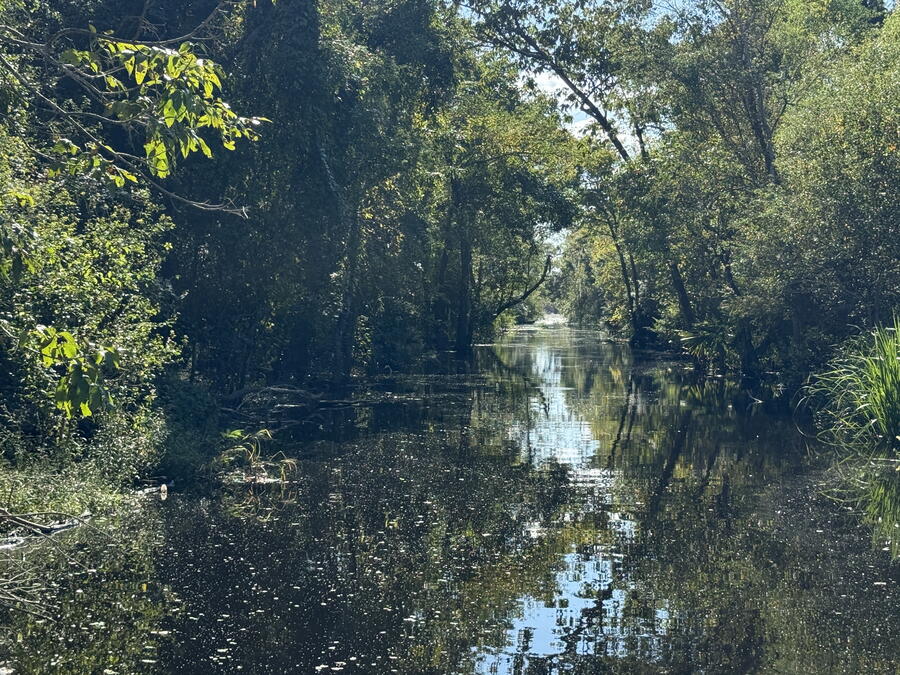


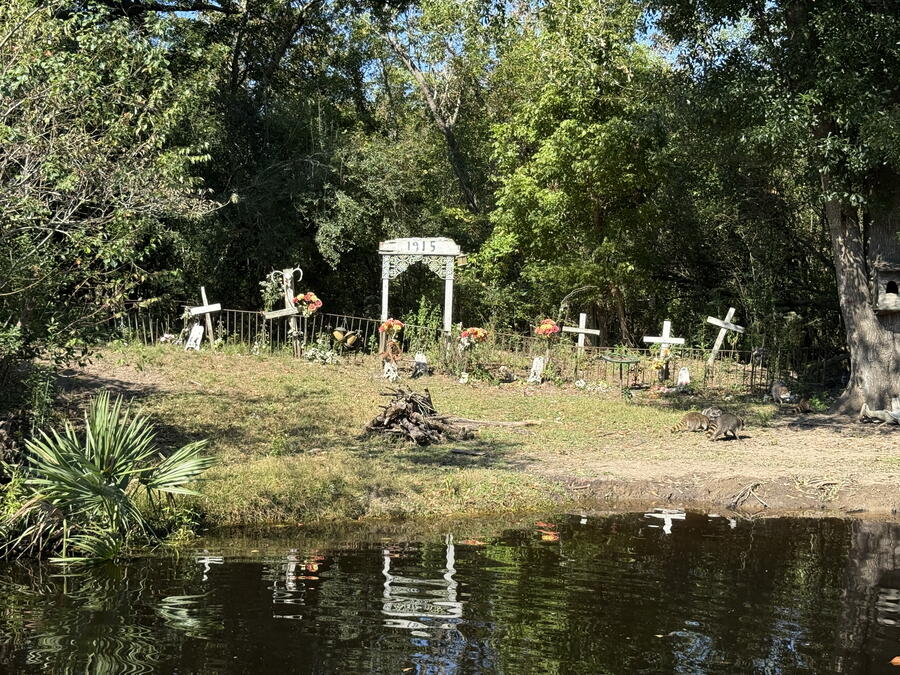
Cajun Pride Swamp Boat Tour
If you think about the typical activity to do in Louisiana, this would probably be at the top of the list. We took a flatboat on the Maurepas Swamp, which seemed to be endless. But in the capable hands of Captain Danny, we felt confident that our safety and fun were assured. The major attraction on the bayou tour was seeing alligators, and there were at least two dozen of various sizes that we saw, along with raccoons, birds, and wild hogs. I also discovered that gators love marshmallows, and they will leap out of the water for them. Luckily, none leaped on our boat. We all held a juvenile gator – Baby Bruce – to say we did this.
However, we also learned that this was the site of Frenier, a historic town that was once home to voodoo priestess Julia Brown. Before she died, she essentially cursed the community and predicted its demise. Thus, Frenier no longer exists, but we found evidence of it in the form of a hunting shack and a few gravesites, including hers.
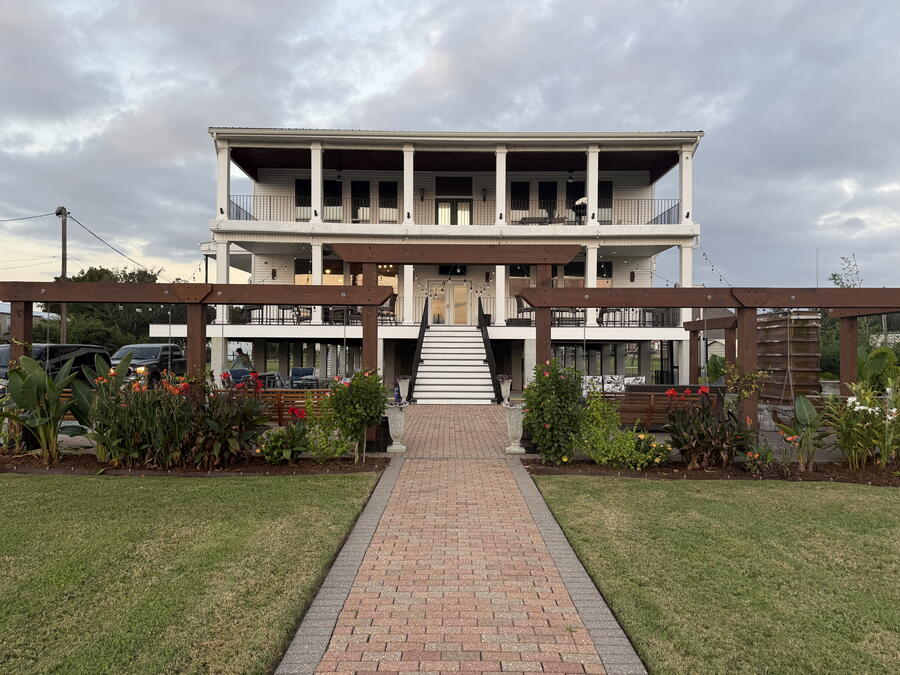
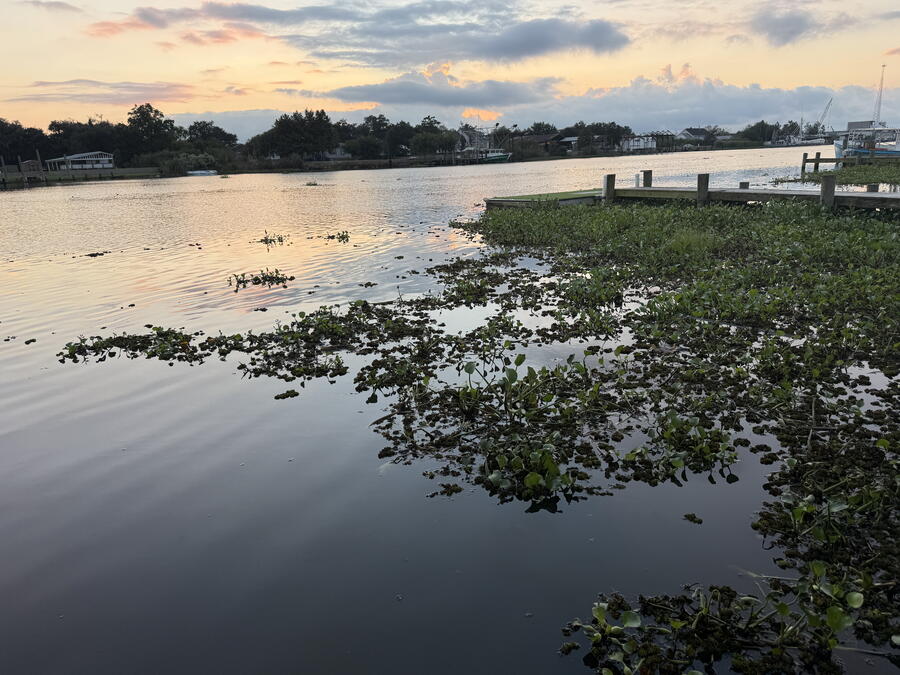


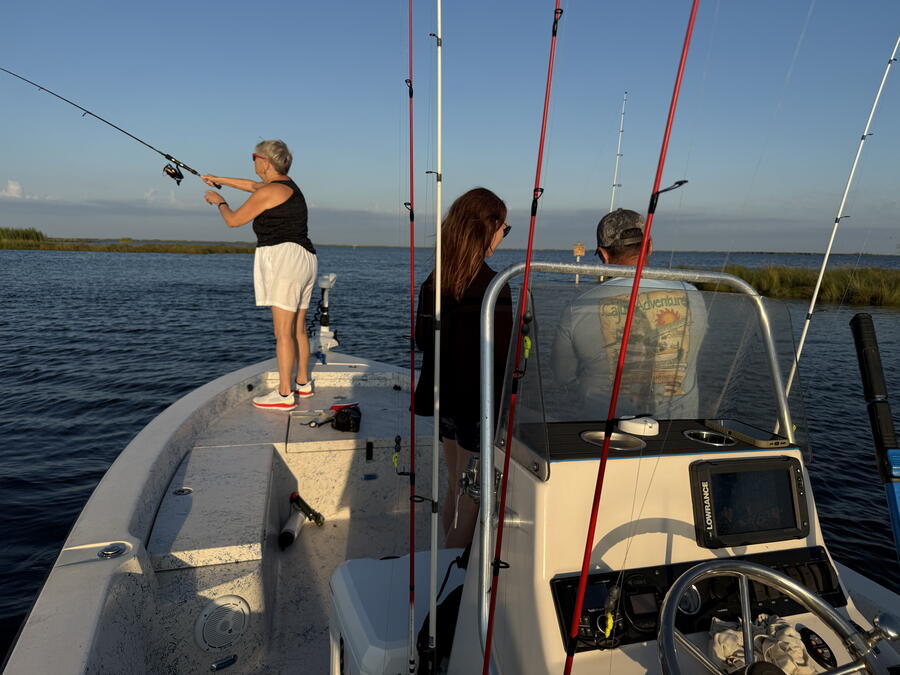
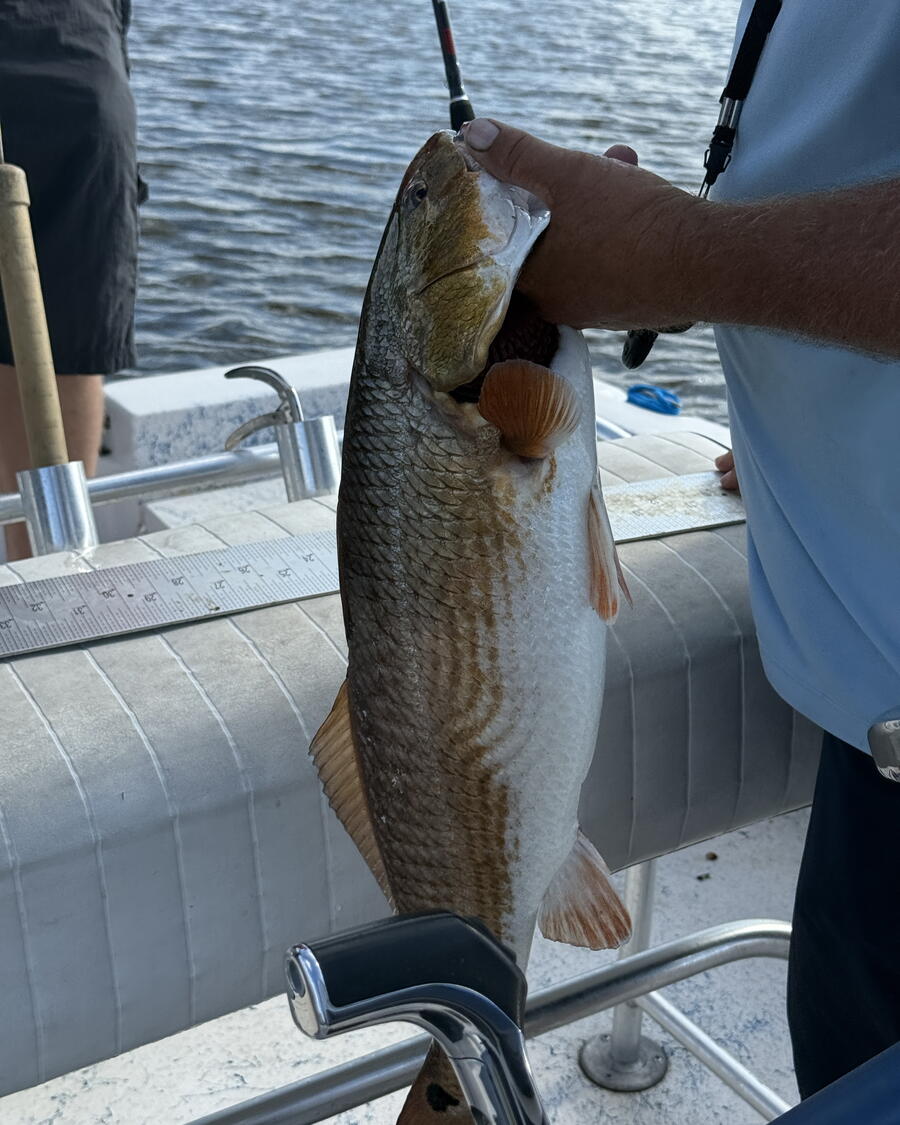
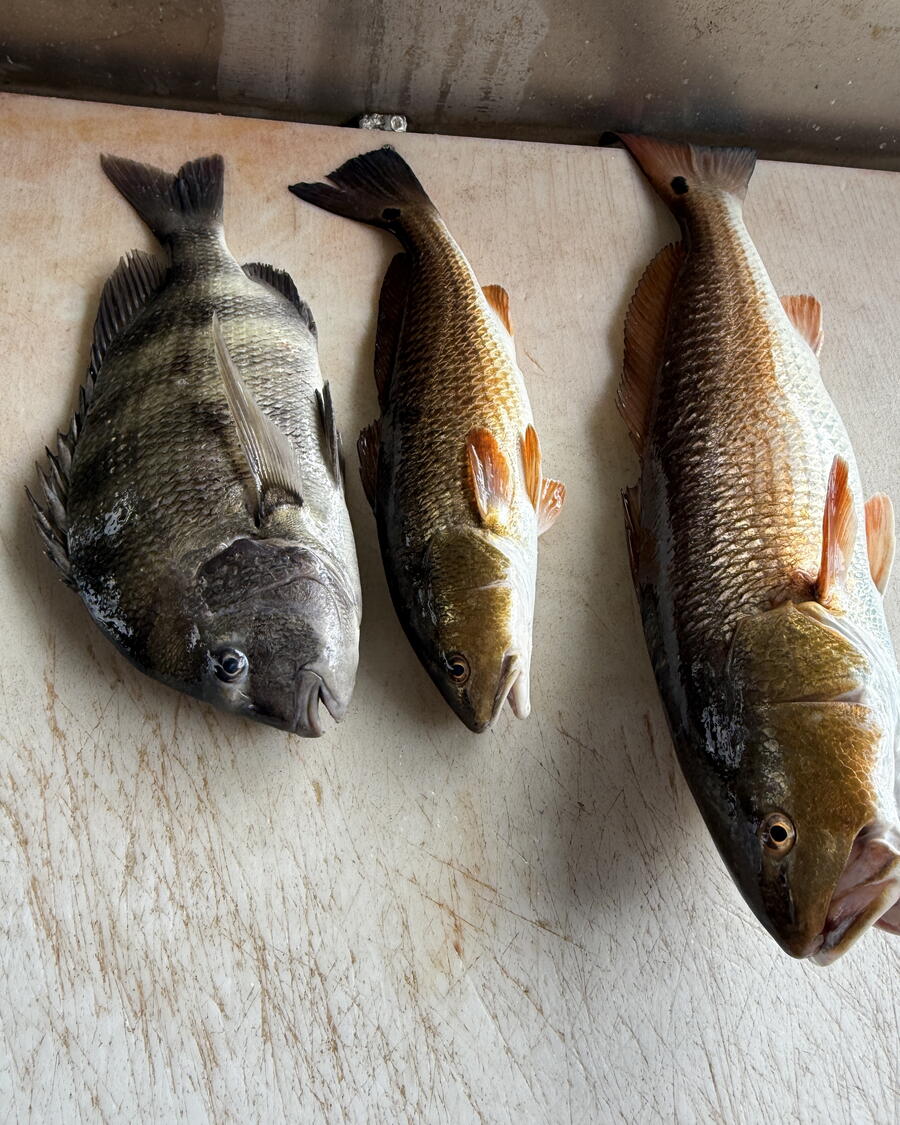


Bourgeois Fishing Charters/Cajun Vista Lodge
Just outside New Orleans is Barataria, where this getaway is. We woke up quite early to start a fishing excursion, but we were rewarded with a fantastic sunrise before we departed. Speeding along the bayou and past some large, impressive homes, we arrived at some remote waterways and learned how to cast our lines and reel them in whenever we got a tug. I managed to catch four fish, but each was too small to keep. However, my friends managed to snag several that we could.
Afterward, we observed the fish (redfish and sheepshead) undergoing the cleaning and filleting process. We then headed to the lodge. Formerly a schoolhouse, it features ten rooms of varying sizes and occupancy, making it an ideal setup for anyone seeking a few days of fishing and relaxation. Before we left, we enjoyed a lunch of fried catfish, red beans and rice, and everything-flavored rolls.
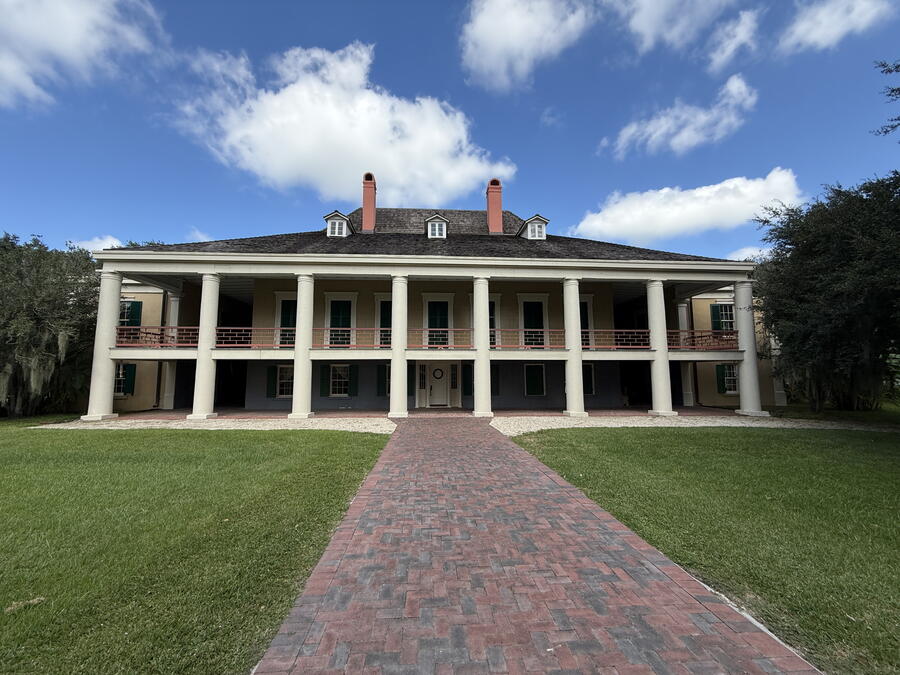
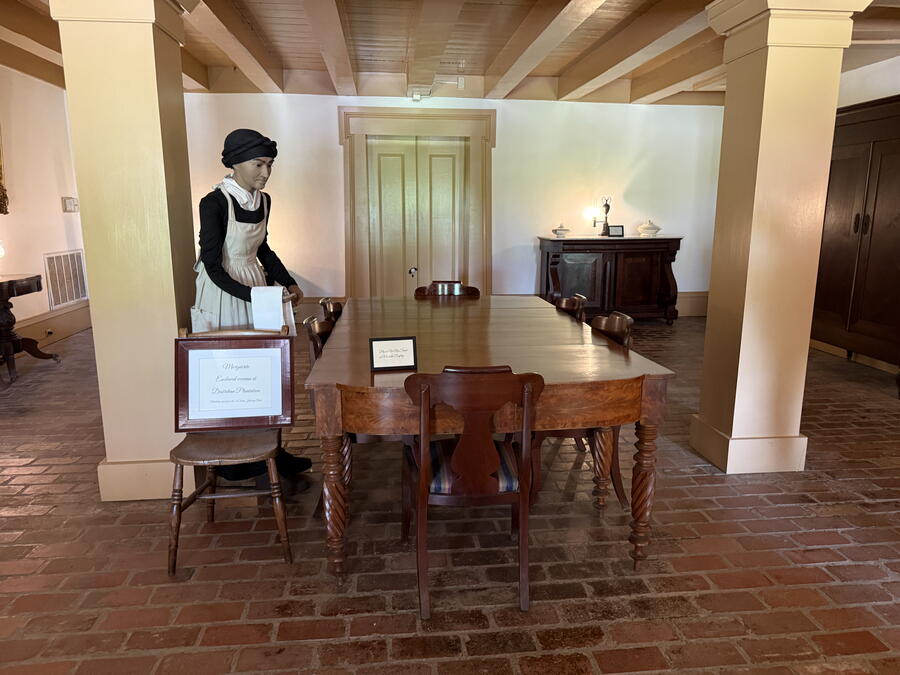
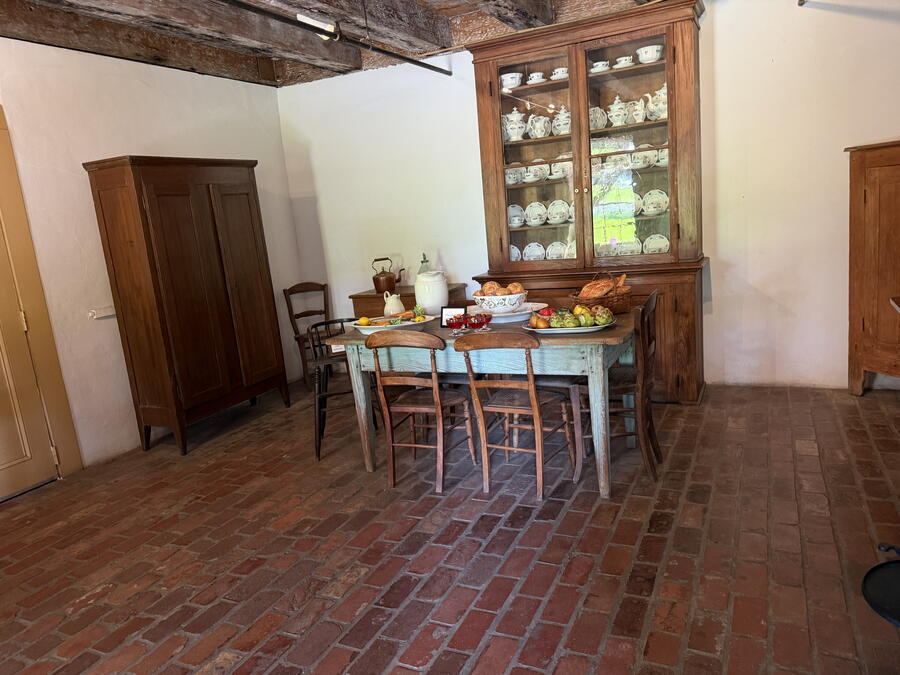
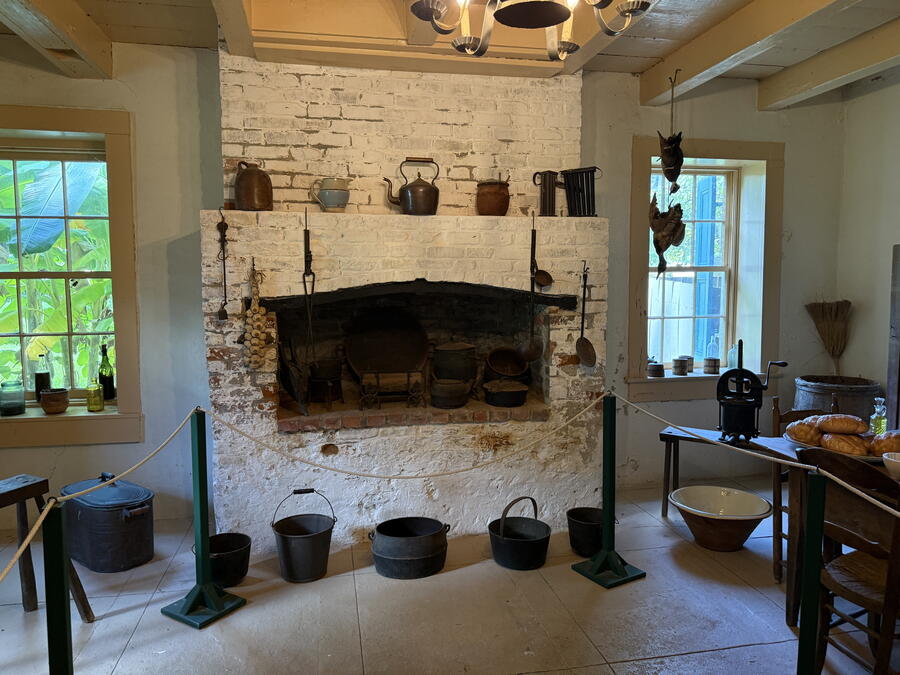
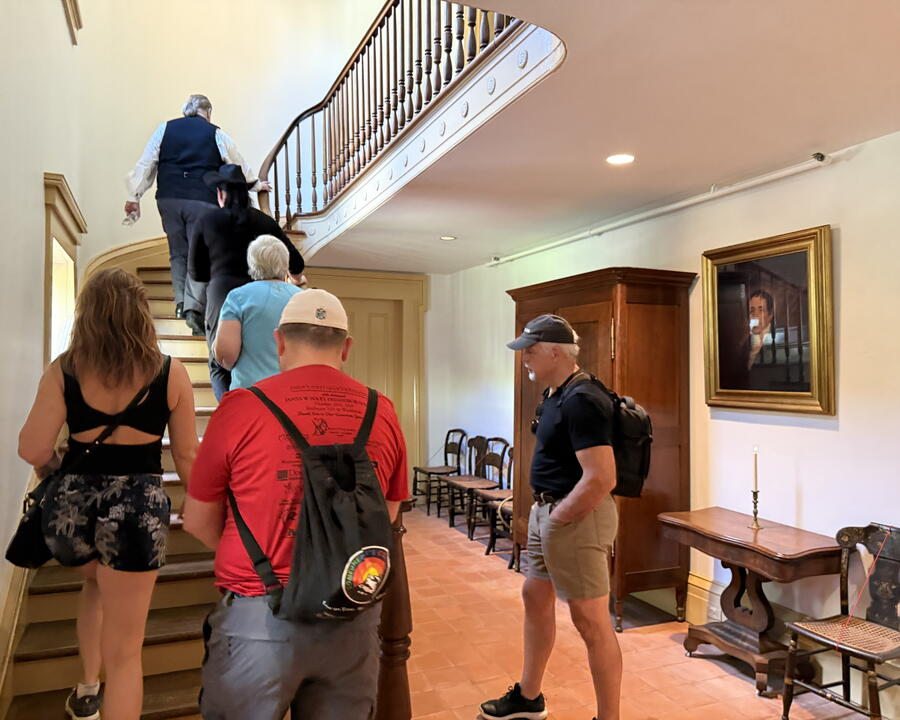
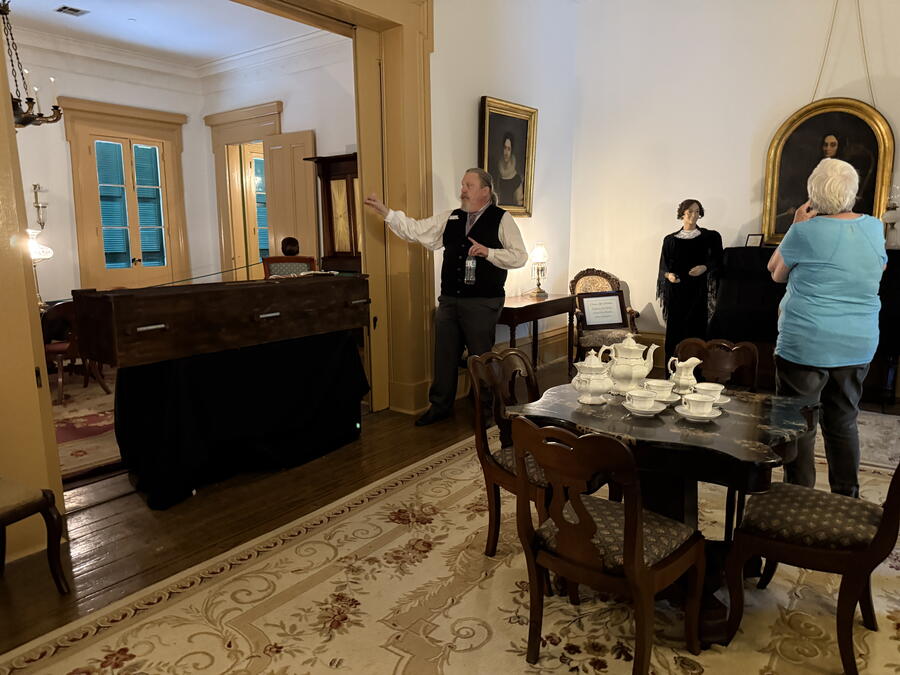
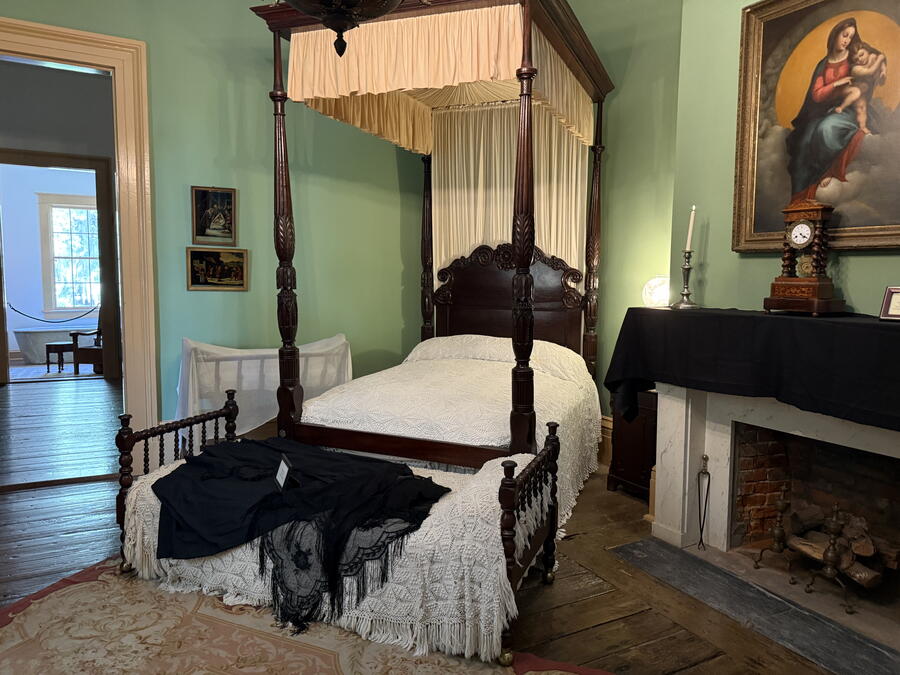
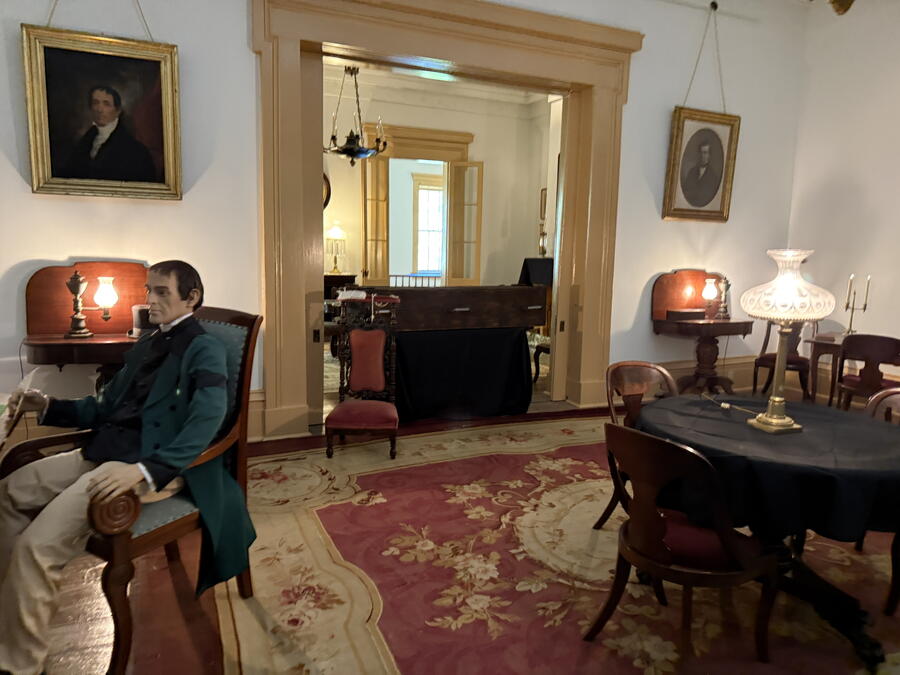
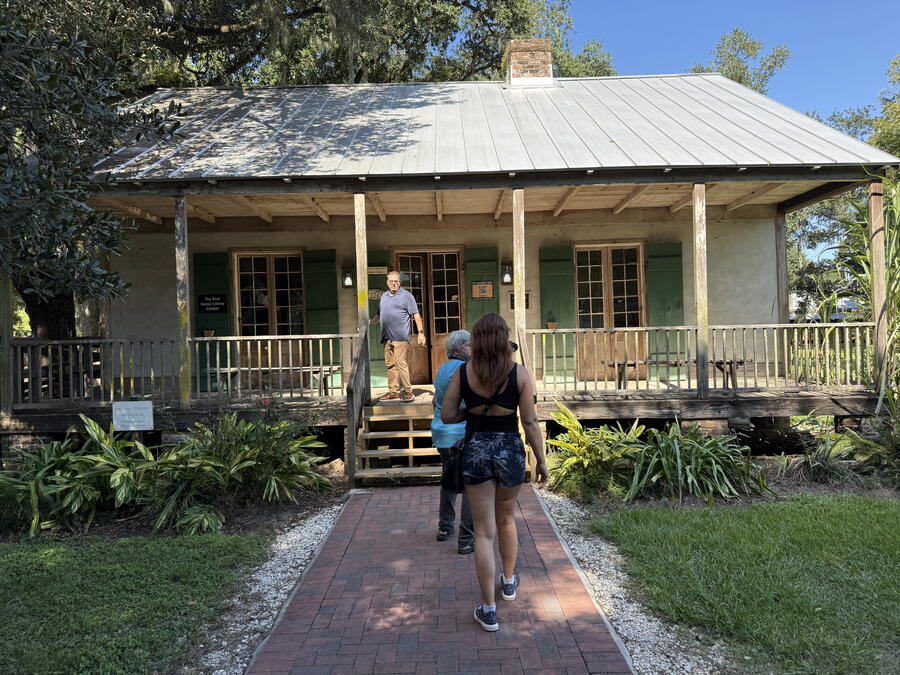

Destrehan Plantation
One of the three plantations we toured during this trip, Destrehan is the closest to New Orleans and is primarily known for its role in the 1811 slave revolt. Enslaved people organized and marched against their owners before being defeated and brutally punished for their rebellion. Since our tour was focused on the main house, we did not spend much time on the revolt, which was housed in a separate building and had a self-guided audio tour. There are also some replica buildings relating to the plantation life.
Touring the house was slightly disappointing because most of the usually grand décor was missing due to a temporary display honoring the dead for October, as well as the absence of its usual furniture and accessories. But we learned that while primarily owned by French Creoles, a free man of color, Charles Pacquet, designed and built Destrehan. His construction allowed the residents to live as comfortably as possible in such an inhospitable environment.


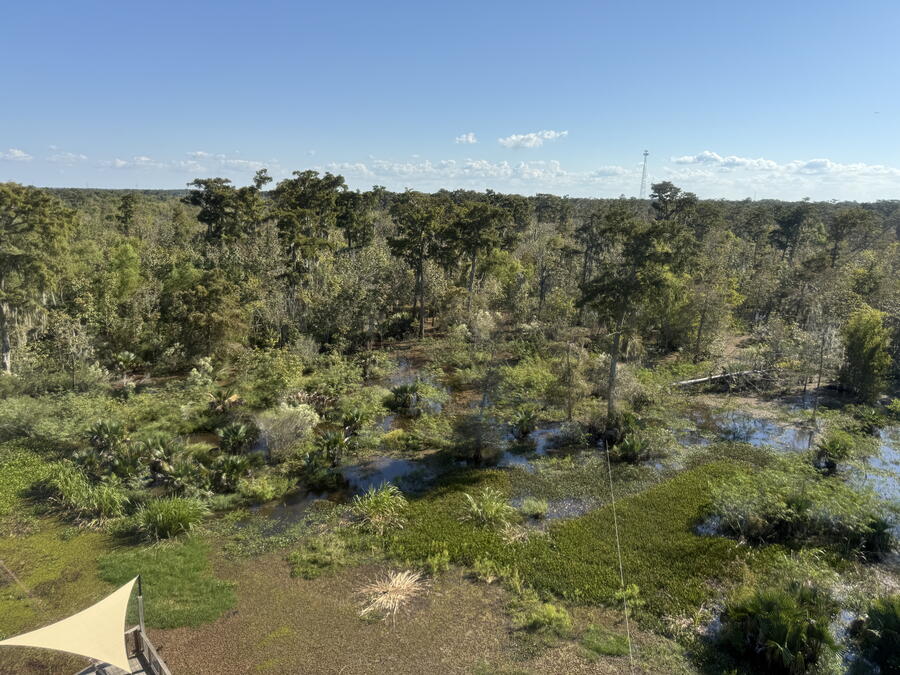
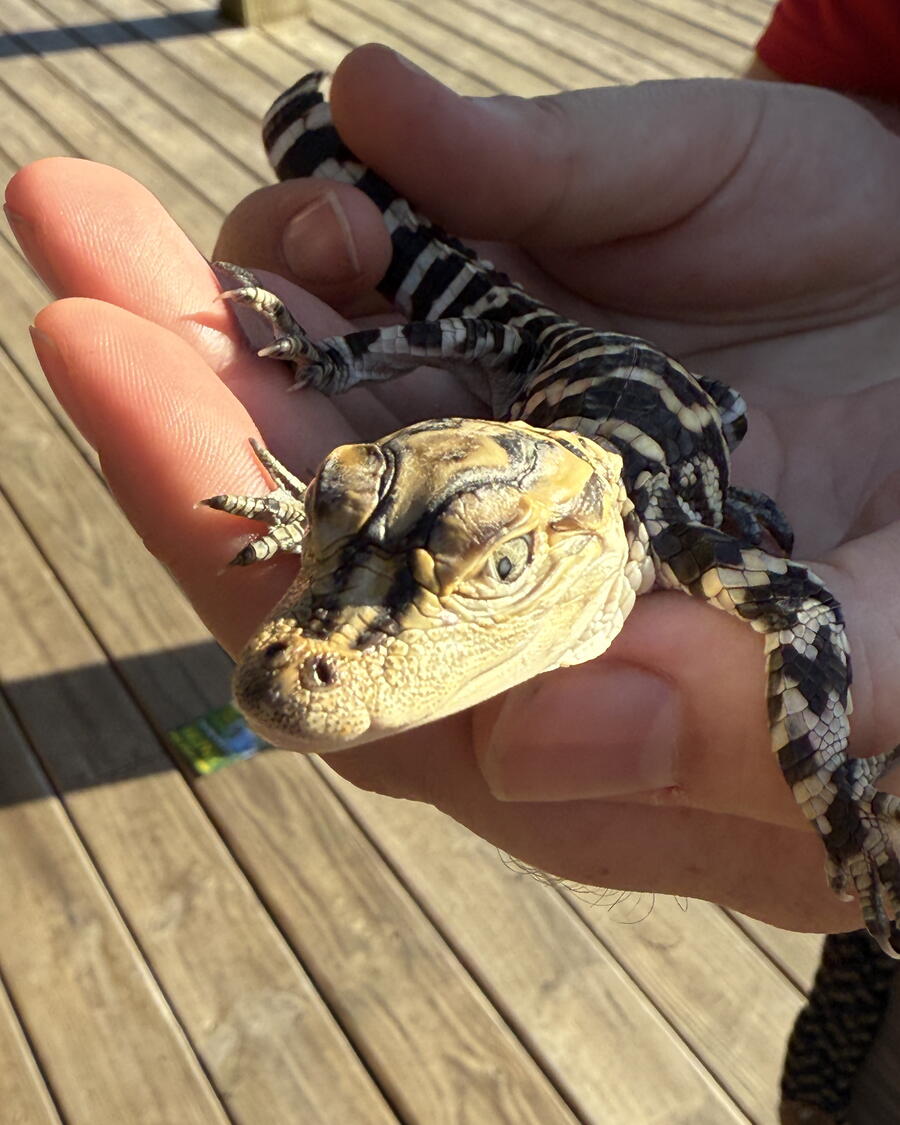
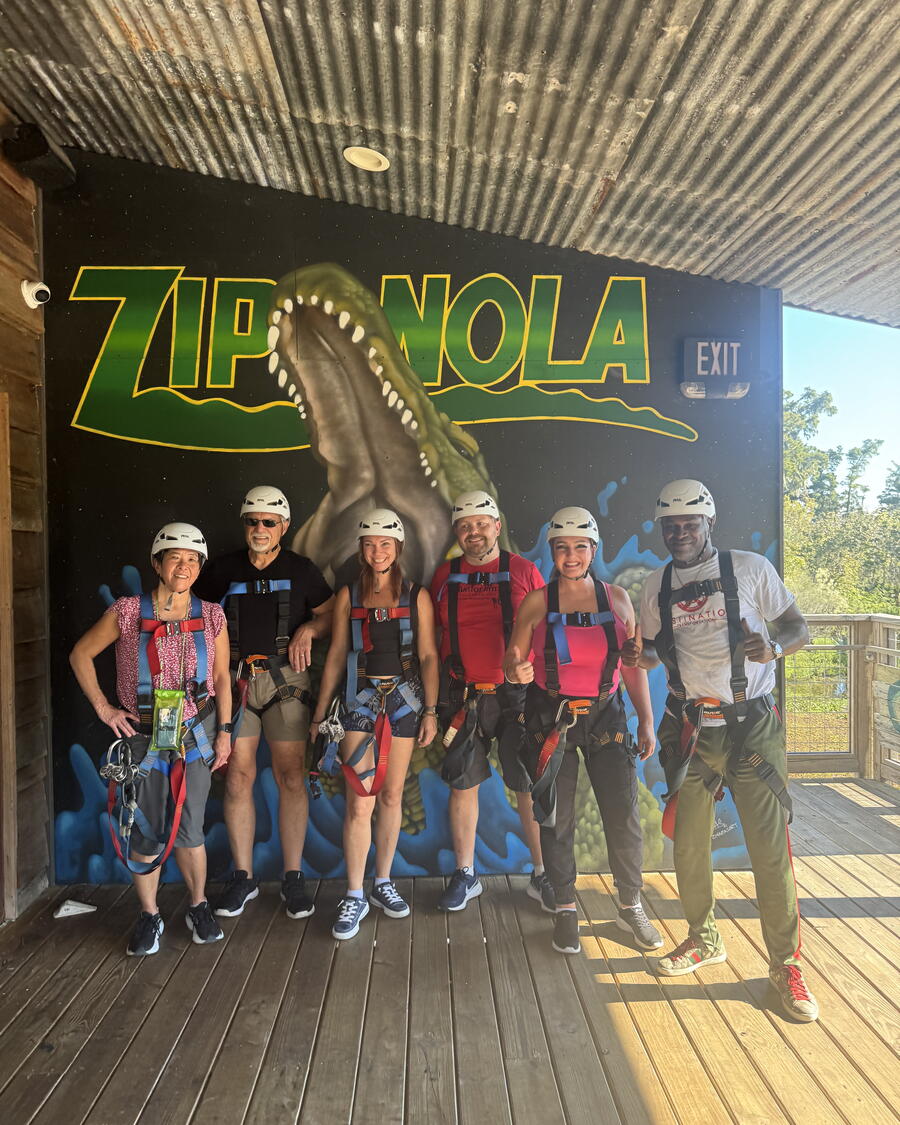
Zip NOLA
You can go on a zip line pretty much anywhere in the world, but I never thought I would sail over alligator-infested bayous in Louisiana. But that’s what I did at Zip NOLA, which made the entire experience of ziplining a bit of a thrill, not just for the flying part but also the thought of being above human-eating reptiles on a thin cable. The scariest part turned out to be climbing the narrow spiral staircase to an even more compact platform 60 feet above the ground.
But after that initial line, I managed to enjoy it for four more, one of which was a drop without a graduated step. Our guides showed us how to do some trick moves on the ziplines, but I kept it normal, only doing one move called a starfish, where I didn’t hold onto the ropes and moved my legs outward. And as if the alligator theme wasn’t driven home enough, we all held a baby gator in the palm of our hands, which was relatively safe since its big teeth hadn’t come in yet.

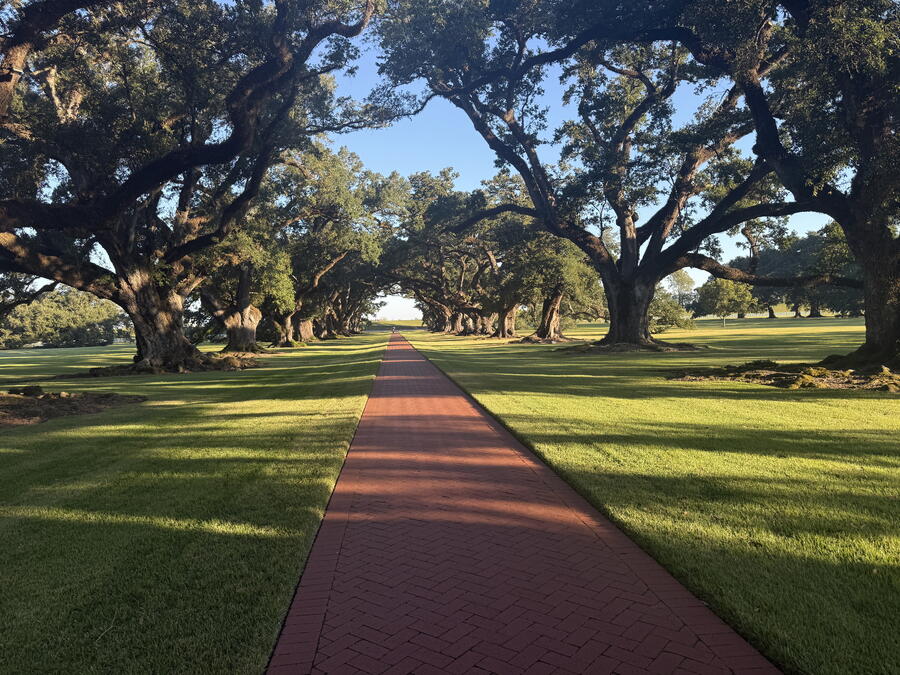
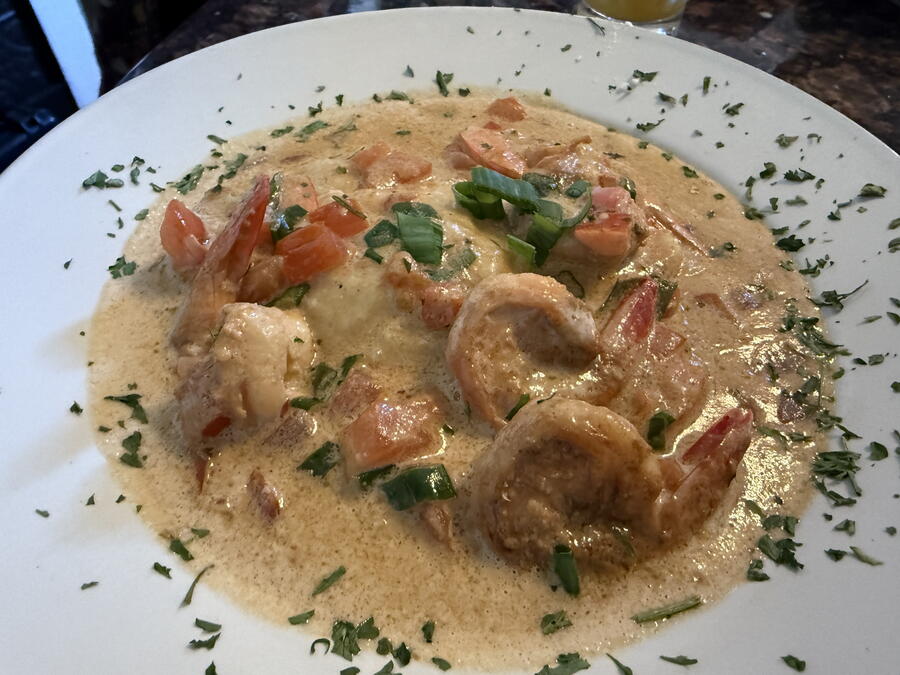
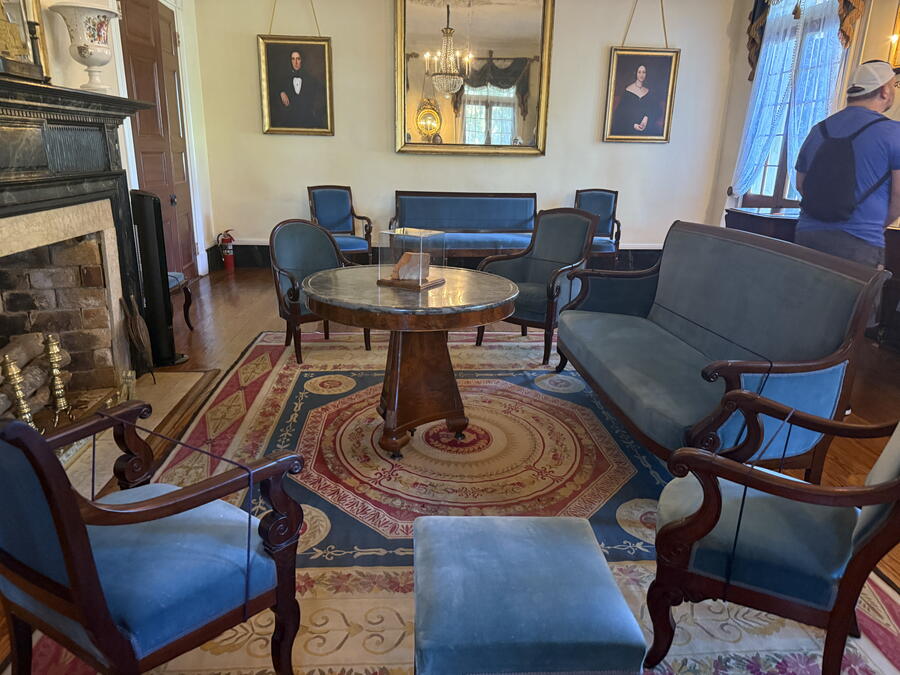
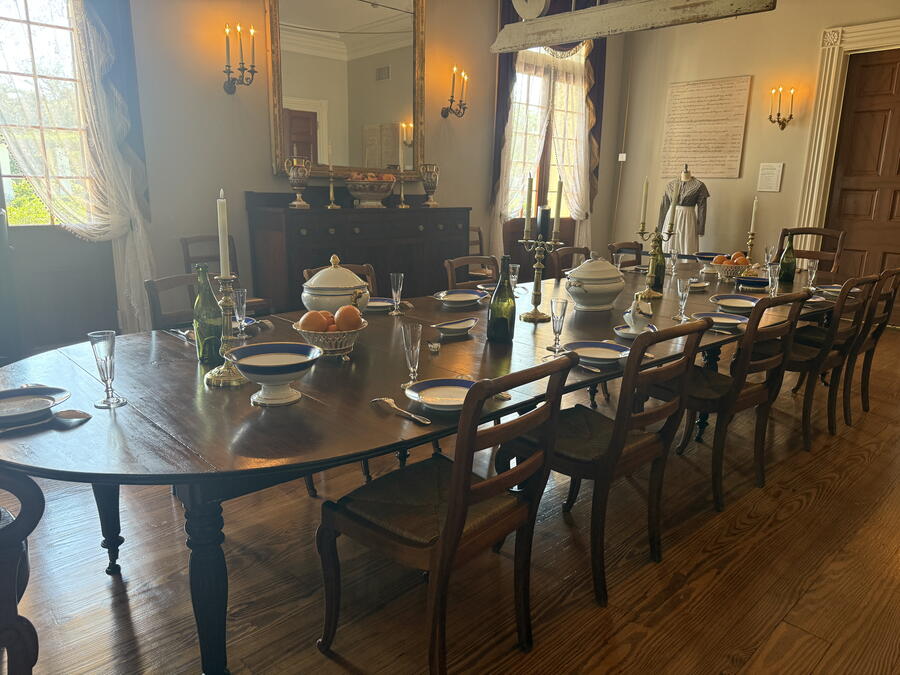
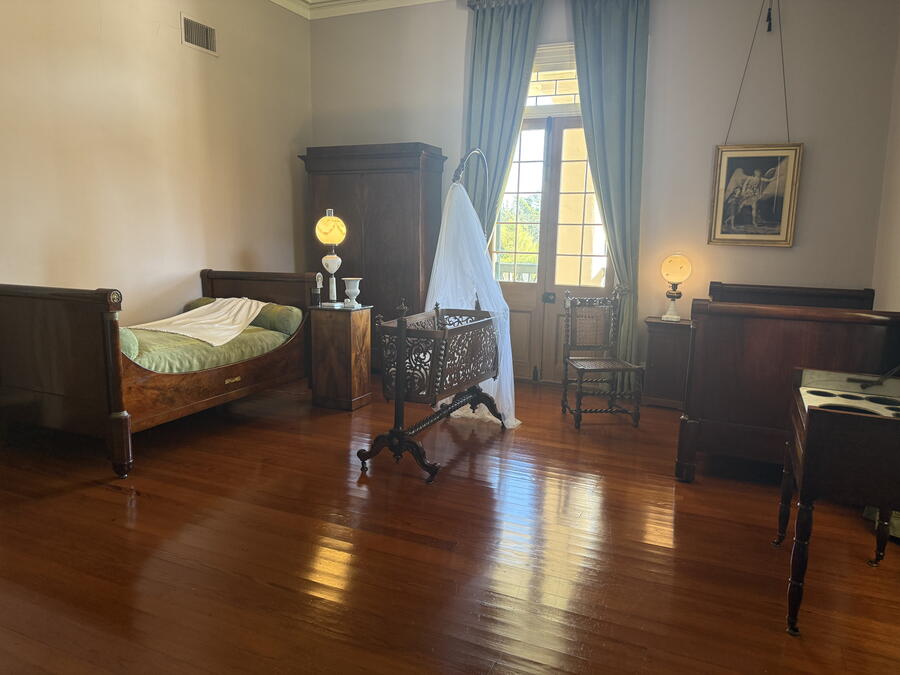
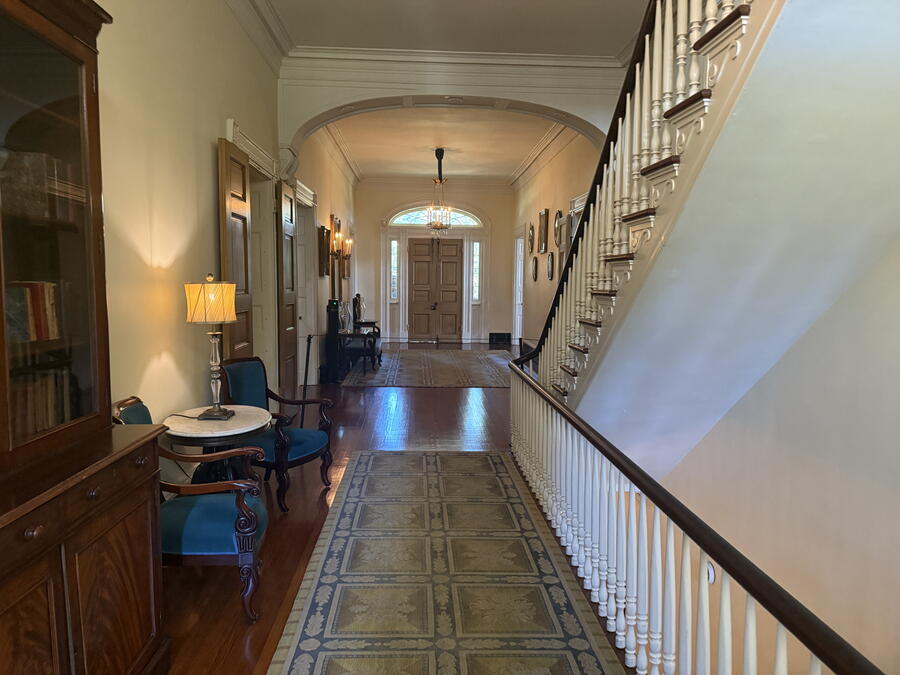
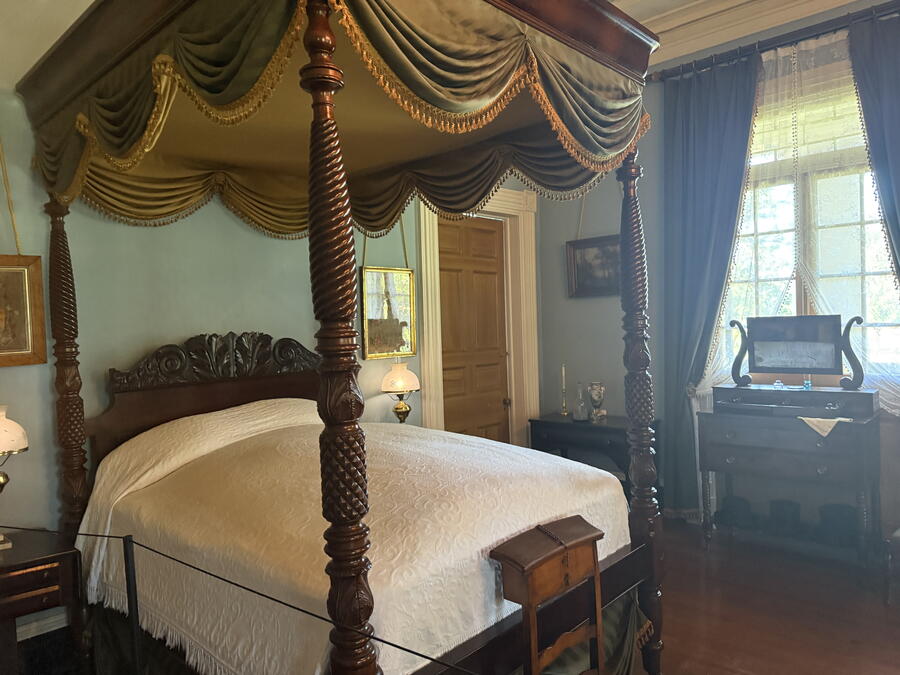

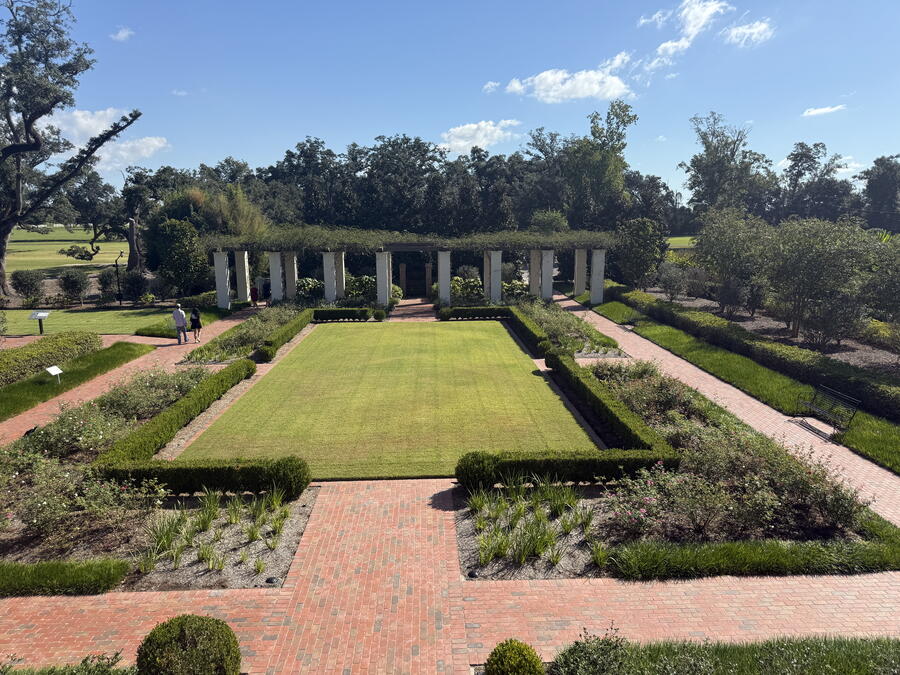
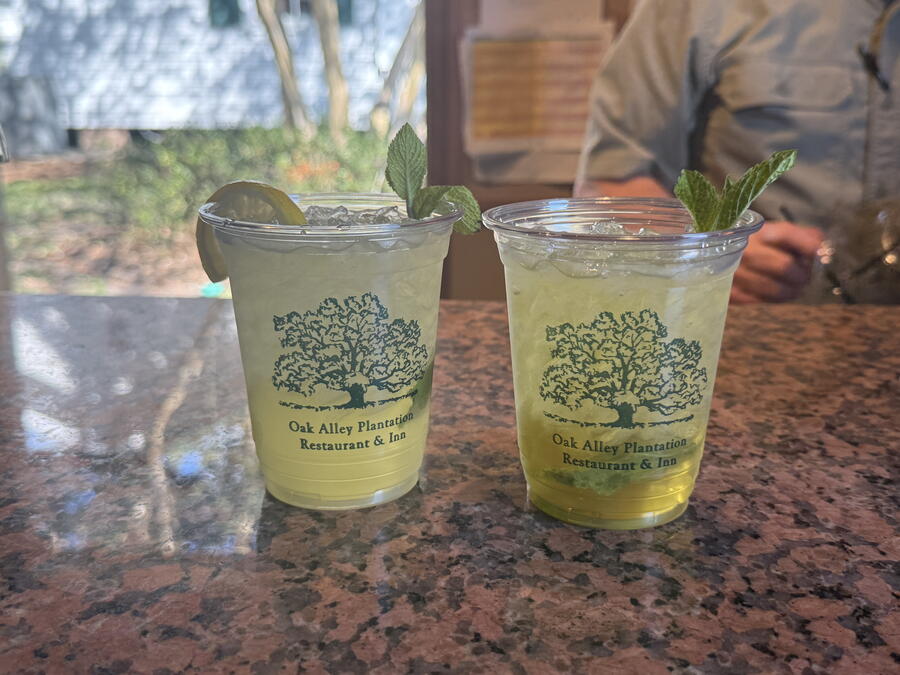
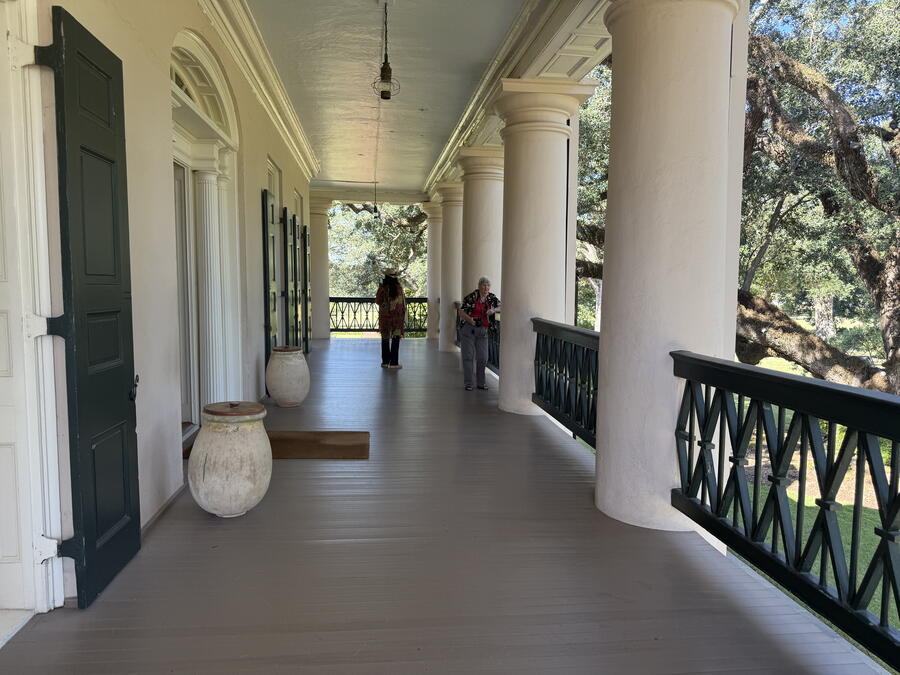

Oak Alley Plantation
The most defining feature of this plantation, which was further up the Mississippi River in St. James Parish near Vacherie, is the dramatic cathedral of live oak trees leading to the main house. This property was about the same size as Destrehan, but it seemed larger due to its vast, open grassy spaces and sugar cane fields. There was also a complex of buildings featuring replica slave quarters and work structures, as well as a garden adjacent to the main home, which was decorated in its finery as we toured it.
What was different about Oak Alley from Destrehan was the accommodations facilities. We stayed in several cottages about a quarter mile from the plantation complex. I shared mine with a friend, where the interior was homey but comfortable and clean. The next day, we ate breakfast before our tour, which was decent but probably could have used some improvement. You can also get cocktails, including a mint julep. That turned out to be too sweet for my liking.

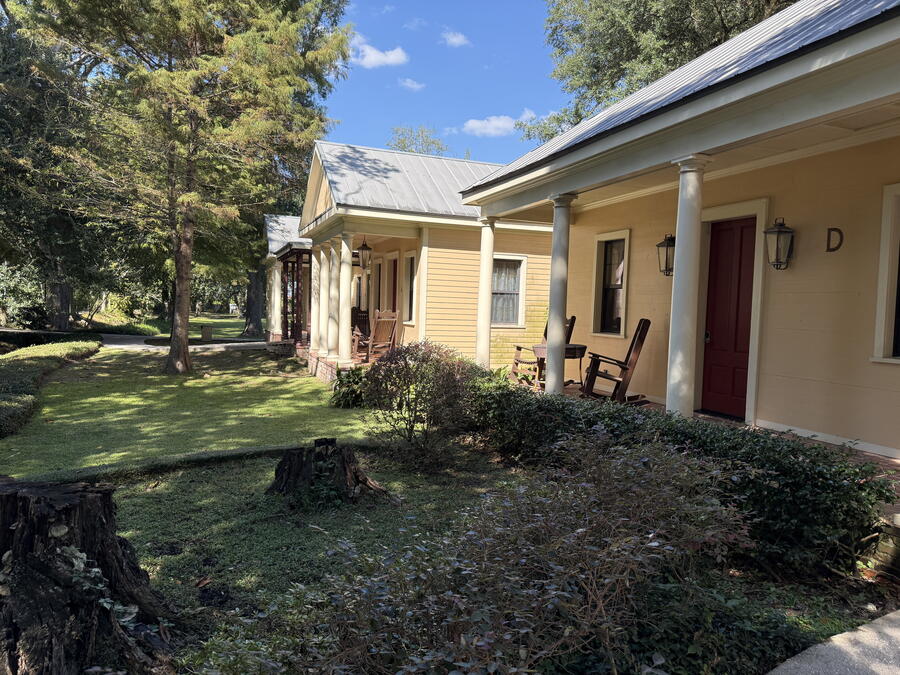
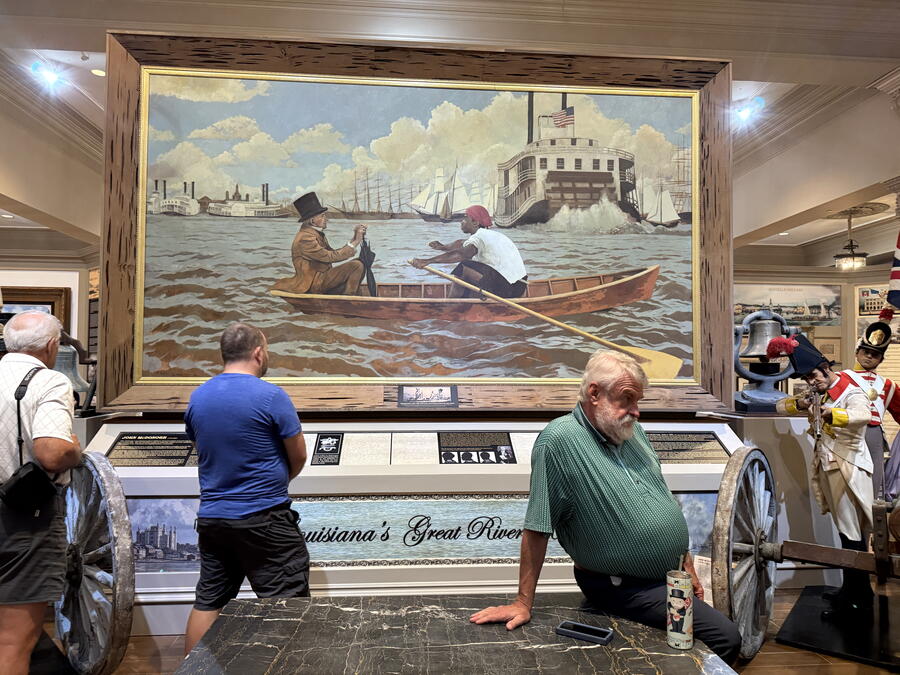

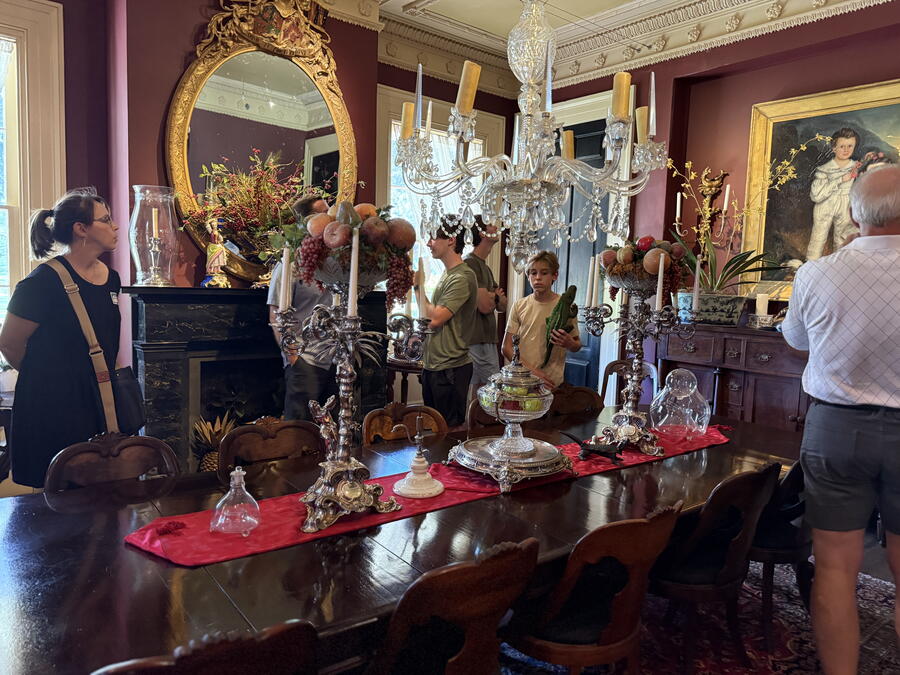
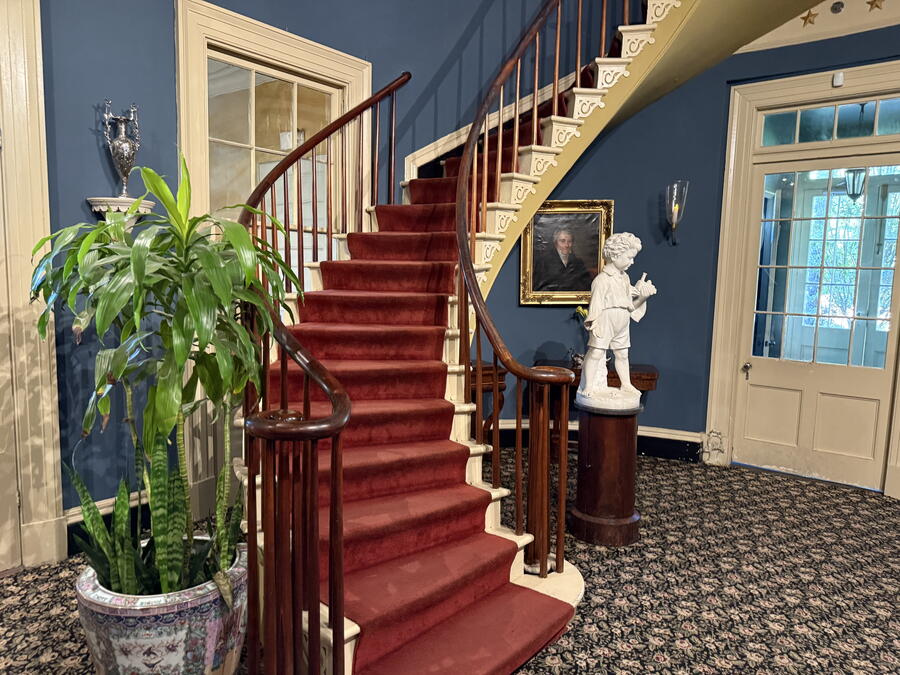
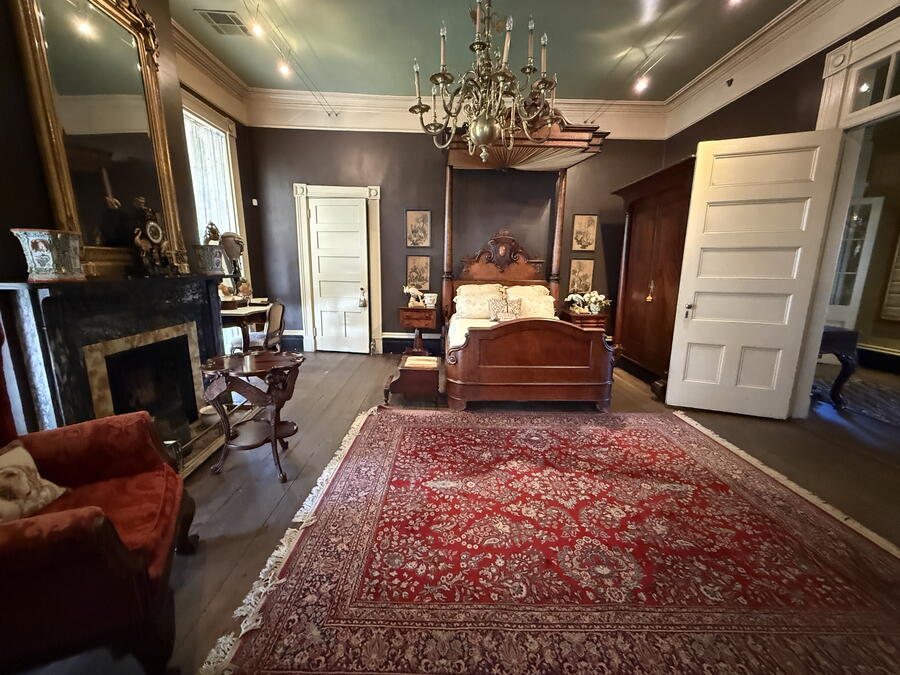

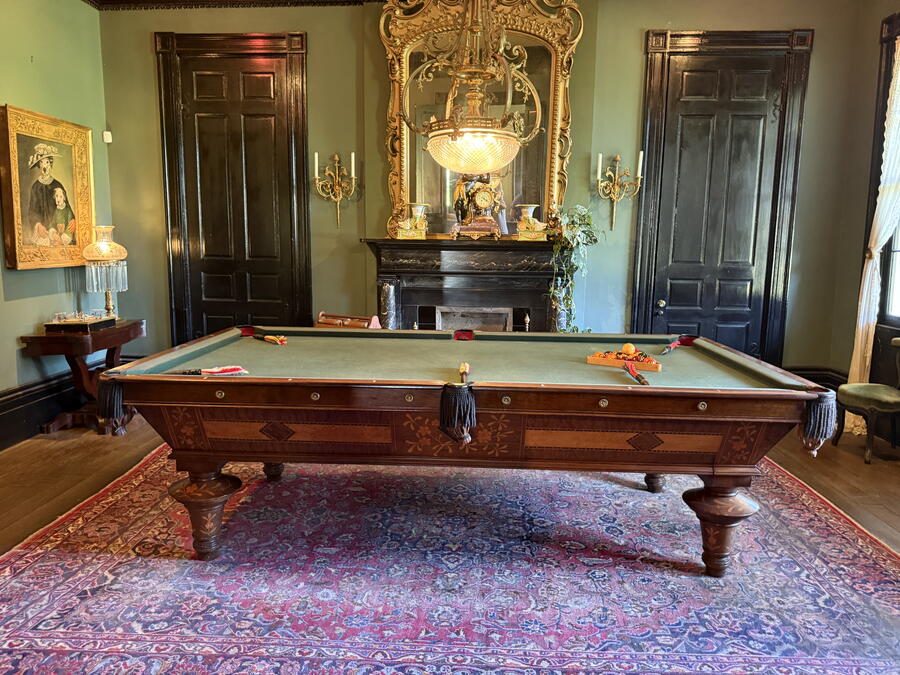
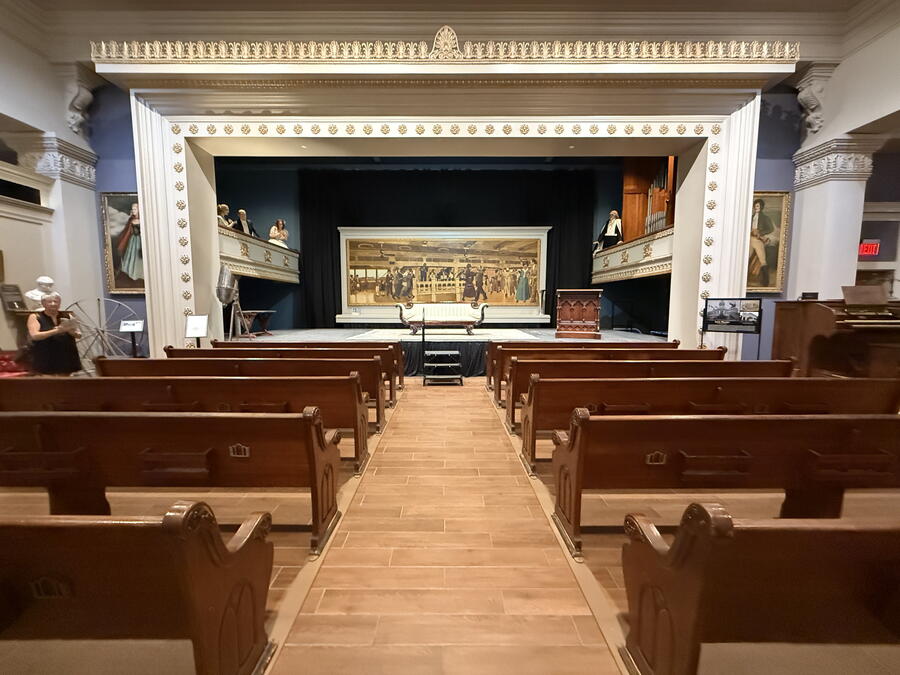

Houmas House
The final plantation we visited was in Ascension Parish in the city of Darrow. Unlike others in the River Parishes area, it has evolved into a much larger complex featuring a museum, guest cottages, gardens, restaurants, and bars. After having lunch at their buffet, we toured some of the luxury accommodations in the cottages, then around some of the gardens, although we didn’t see much of them. We spent significantly more time in the Great River Road Museum, which tells the history of Louisiana in the context of the Mississippi River.
Touring the main house, we probably saw the most elaborately decorated home of the three plantations. However, one aspect that made it enjoyable was the current owner, Kevin Kelly’s, affection for dogs, particularly his two current yellow Labradors, which are featured in a mural in the entryway and incorporated into the décor in the master bedroom and other rooms. He also treated us to cocktails in the carriage house after our tour.
